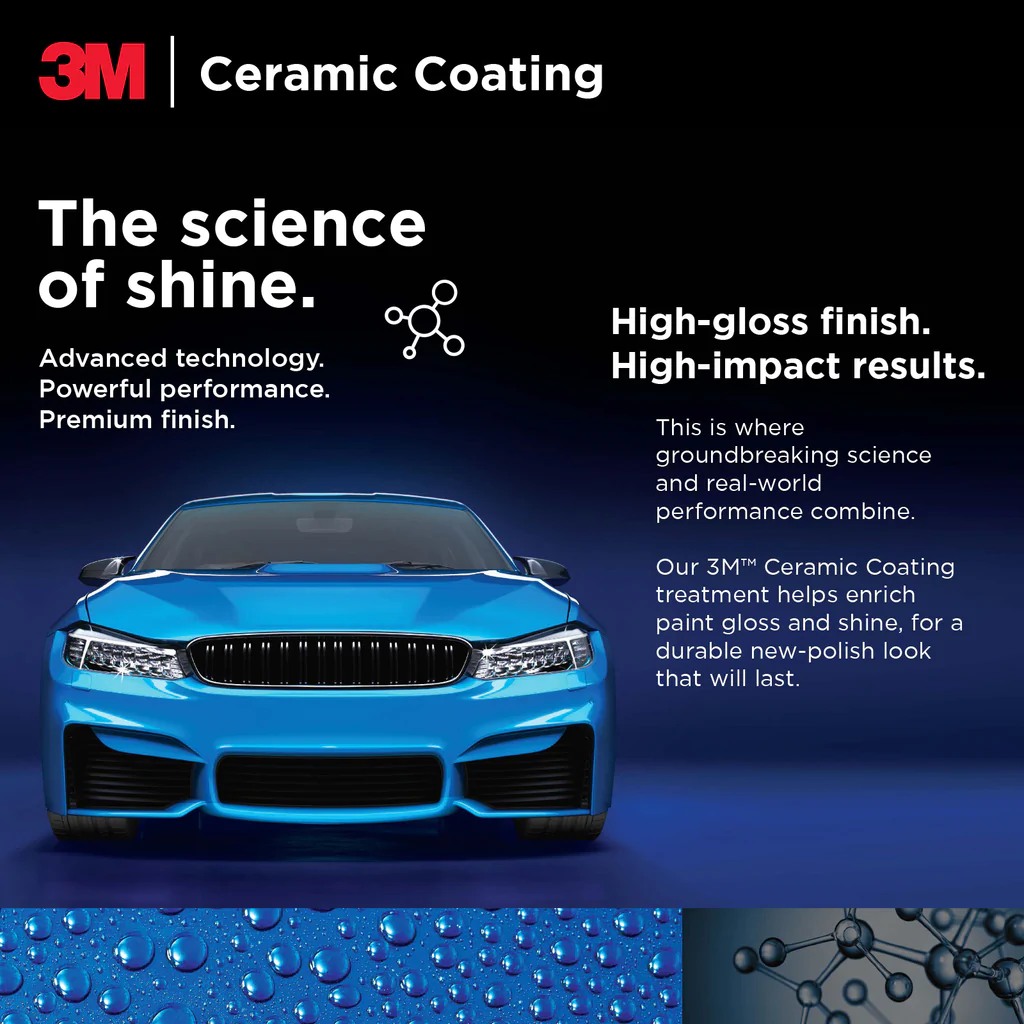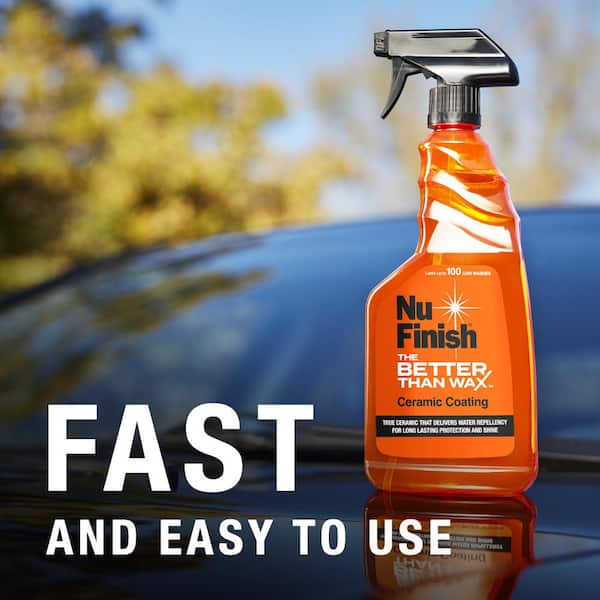Why Ceramic Coating Philadelphia Is the Best Option for Costs Paint Defense
Why Ceramic Coating Philadelphia Is the Best Option for Costs Paint Defense
Blog Article
Why Ceramic Finish Is the Ultimate Remedy for a Flawless Complete
Ceramic layer has actually arised as a leading service for those seeking a perfect coating for their automobiles, many thanks to its amazing resilience and protective functions. What elements truly set ceramic finish apart?
What Is Ceramic Layer?

When used appropriately, ceramic layer produces a hydrophobic surface that repels water and dirt, making it much easier to clean up and maintain. Unlike typical waxes or sealants, which commonly offer short-term security, ceramic layers can last for a number of years, depending upon the item top quality and application technique. The process of using ceramic finish calls for meticulous prep work, including thorough cleansing and occasionally repaint improvement, to make sure optimum bonding and efficiency.
Ceramic layers are not limited to automobile surface areas; they can additionally be used on various materials, consisting of glass, steel, and plastics, supplying a flexible remedy for enhancing defense. Generally, ceramic finishing represents a substantial advancement in surface area protection technology, incorporating both practical and visual benefits for a wide variety of applications.
Benefits of Ceramic Covering
While lots of surface protection options exist, the advantages of ceramic finish stick out due to its distinct homes and long-lasting performance. One of the primary benefits is its extraordinary resilience. Ceramic Coating Philadelphia. Unlike typical wax or sealants that call for regular reapplication, ceramic layers provide a resilient layer that can last for a number of years, considerably reducing maintenance efforts
Another remarkable benefit is improved security against environmental contaminants. Ceramic layers create a hydrophobic surface that pushes back water, dust, and different toxins, making it much easier to clean. This attribute not only maintains the vehicle's look yet also reduces the danger of rust and oxidation, particularly in extreme weather problems.
Furthermore, ceramic finishings supply exceptional resistance to UV rays, avoiding fading and degradation of paint over time. This UV defense is crucial for maintaining the aesthetic worth of lorries and surface areas subjected to route sunshine.
Furthermore, the glossy surface achieved with ceramic coating enhances the overall visual allure, offering surface areas a showroom-quality shine. On the whole, ceramic finishings stand for a considerable innovation in surface security technology, offering enduring benefits that deal with both practical and aesthetic demands.
Just How It Works
Recognizing the science behind ceramic coverings exposes just how they offer such impressive protection and longevity. At its core, a ceramic layer is a liquid polymer that chemically bonds with the lorry's manufacturing facility paint. This bonding produces a safety layer that is both hydrophobic and oleophobic, repelling water, dust, and oil. The key part of the majority of ceramic finishings is silicon dioxide (SiO2), which is stemmed from quartz. This compound adds to the finish's hardness and resistance to scrapes, UV rays, and ecological contaminants.
The application procedure entails numerous steps, including surface area preparation, which is important to achieving ideal attachment. When used, the finish goes through a treating process, throughout which it sets and forms a semi-permanent bond with the paint surface. This bond is what distinguishes ceramic coatings from typical waxes and sealants, giving a longer-lasting safety barrier that can endure for years.
In addition, the density of the layer can improve its protective qualities, guaranteeing that it can hold up against severe problems. Inevitably, the scientific research of ceramic layers integrates sophisticated products with innovative application methods to deliver an unmatched degree of security and visual enhancement for automobiles.
Contrast With Conventional Methods
When contrasted to conventional paint protection approaches such as sealers and waxes,The benefits of ceramic finishings become particularly obvious. While waxes use a short-term luster, typically lasting a few weeks to a number of months, ceramic coverings supply a resilient protective layer that can sustain for a number of years. This sturdiness considerably minimizes the frequency of reapplication, making ceramic coverings a much more cost-effective solution gradually.
Furthermore, traditional approaches often require extensive preparation and several applications to achieve a sufficient level of protection. In comparison, ceramic finishings bond at a molecular level with the lorry's surface, producing a durable shield against ecological contaminants like UV rays, acid rain, and road salts. This bond enhances the lorry's resistance to scratches and swirl marks, which are widespread with conventional waxes and sealers.
Moreover, the hydrophobic homes of ceramic layers ward off water and dust, causing less complicated cleaning and maintenance. In contrast, wax and sealant-treated surfaces can attract crud, requiring more constant cleaning - Ceramic Coating Philadelphia. Overall, ceramic coverings not only offer premium security however additionally deliver a more enduring and visually enticing finish, establishing them as the recommended choice for discerning lorry proprietors
Application and Maintenance Tips

Making use of a foam applicator, apply the layer in small sections, following the maker's standards concerning thickness and overlap. Enable why not check here sufficient treating time between layers, normally 24 hours, to guarantee proper bonding. After application, it is essential to avoid exposure to water or severe components for a minimum of a week to permit the covering to completely heal.
For upkeep, wash the car on a regular basis with pH-balanced soaps and avoid abrasive products. Touchless cars and truck cleans are suggested to decrease scraping. Additionally, making use of a ceramic upkeep spray can boost the layer's hydrophobic residential or commercial properties and longevity. Routine evaluations for any signs of wear will help preserve the layer's integrity and maintain that immaculate finish.
Verdict
To conclude, ceramic layer emerges as an exceptional choice for accomplishing a flawless automotive finish. Its extraordinary resilience, protective top qualities, and hydrophobic properties significantly boost the lorry's appearance while simplifying maintenance efforts. By developing a durable bond with manufacturing facility paint, ceramic covering efficiently guards against scrapes, UV rays, and environmental impurities. With a lifespan expanding numerous years, this sophisticated option not only maintains but likewise raises the total aesthetic charm of lorries, making it an affordable investment for car enthusiasts.

Report this page